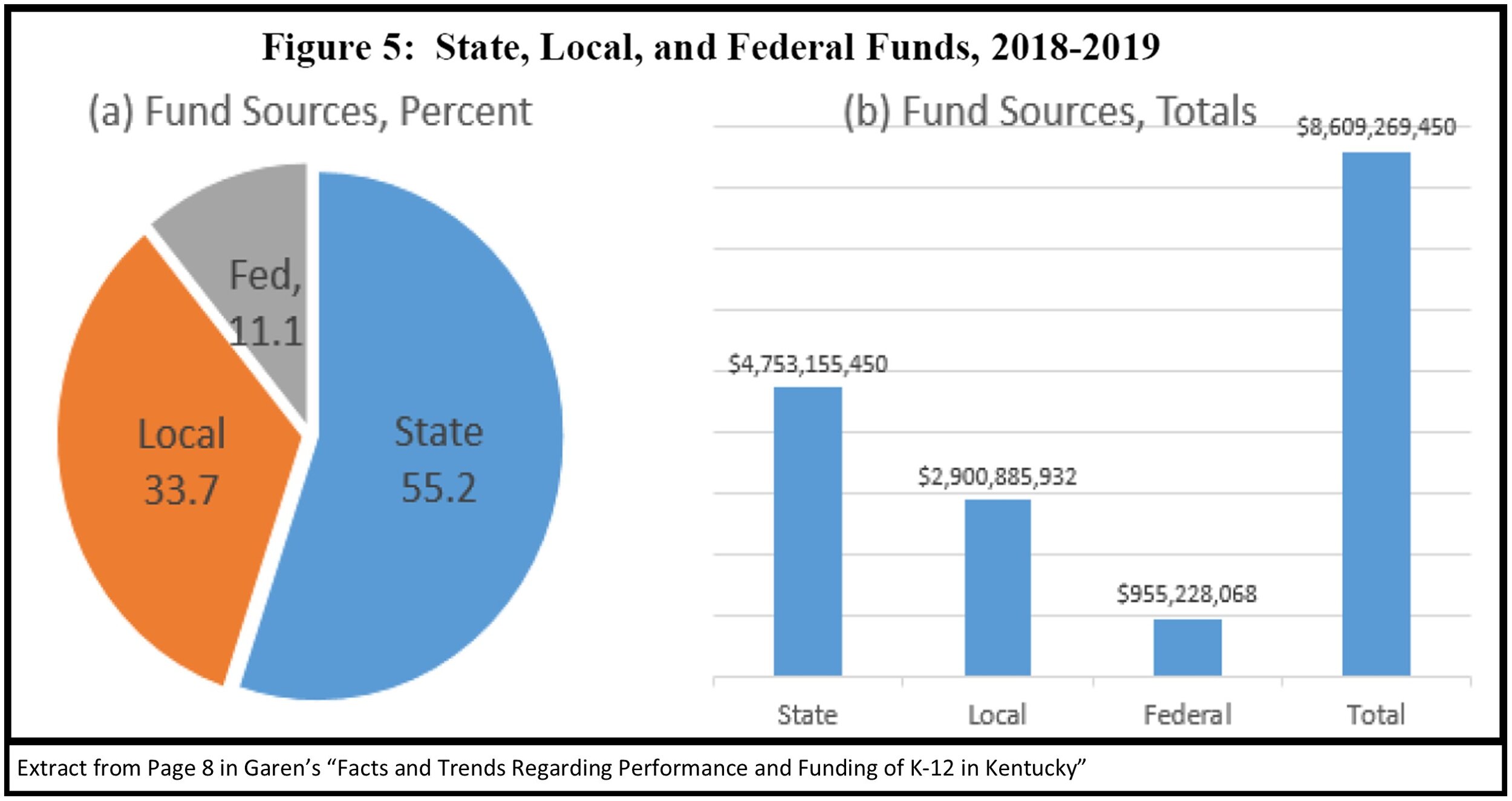More on Prof. Garen's K to 12 Education Research - How Kentucky’s Schools Are Really Funded
I’ve now done two blogs about research on public education funding and performance in Kentucky from Bluegrass Institute Board of Scholars member Dr. John Garen.
The first blog talks about Dr. Garen’s findings about increases in total K to 12 Education funding in Kentucky.
The second blog took a “Bang for the Buck” look at how education performance trended while the state’s education funding rose 80% in real, inflation-adjusted dollars.
This third blog, which is also based on material in Dr. Garen’s new report, The Institute for the Study of Free Enterprise Working Paper Number 36, looks at the proportion of total school spending in Kentucky coming from local, state and federal sources. If you’ve been reading a lot of recent mass media reporting about this area, prepare to be surprised.
Dr. Garen provides a very nice graphic that shows this issue clearly. It is his Figure 5 and is found on Page 8 in the report. Here is that graphic.
There has been a lot of talk about how the state legislature isn’t stepping up to meet its requirement to provide the major part of education funding in Kentucky’s public schools. Garen’s findings show those complaints are not correct.
As of the 2018-19 school term, according to online financial data provided by the Kentucky Department of Education (KDE) itself, total education funding from state sources amounted to $4,753,155,450. Local sources added another $2,900,885,932 and federal sources completed the total amount of funding with another $955,228,068. Those three figures add to a grand total of $8,609,269,450.
The state, local and federal numbers, by the way, agree exactly with numbers reported in the KDE’s Revenues and Expenditures 2018-2019 report. I mention that specific KDE report because it presents audited financial report information. This isn’t based on projections from budgets that don’t always reflect what actually happens when real checks get signed.
Anyway, those reports about the state coming up short on education spending don’t really add up.
This isn’t to say that a few local school districts don’t have a beef, as Kentucky’s problematic SEEK formula for distributing some, but far from all, education dollars is biased against wealthy districts. But, this just provides more evidence that SEEK funding needs attention, something that has been talked about, but never acted upon, for many years in Kentucky. Maybe Dr. Garen’s findings will move the SEEK discussion along to a more successful and fair apportionment formula.
By the way, the results discussed in the three blogs in this series along with a lot more information in the report lead Dr. Garen to this conclusion found on his Executive Summary page:
“The high and increasing cost of K-12, coupled with its weak performance indicate the need for fundamental reform based on sound principles.”
We’ll expand on that some more in future posts, pointing out that one of the reforms Dr. Garen mentions is providing better school choice options for parents, who are among those with the most intimate knowledge of what their children need.
Meanwhile, Dr. Garen’s paper has a lot more information and is well worth your time.
John Garen, Ph.D., is the BB&T Professor of Economics in the Gatton College of Business and Economics at the University of Kentucky. He has extensive experience with economic research including research in the K to 12 education area.

